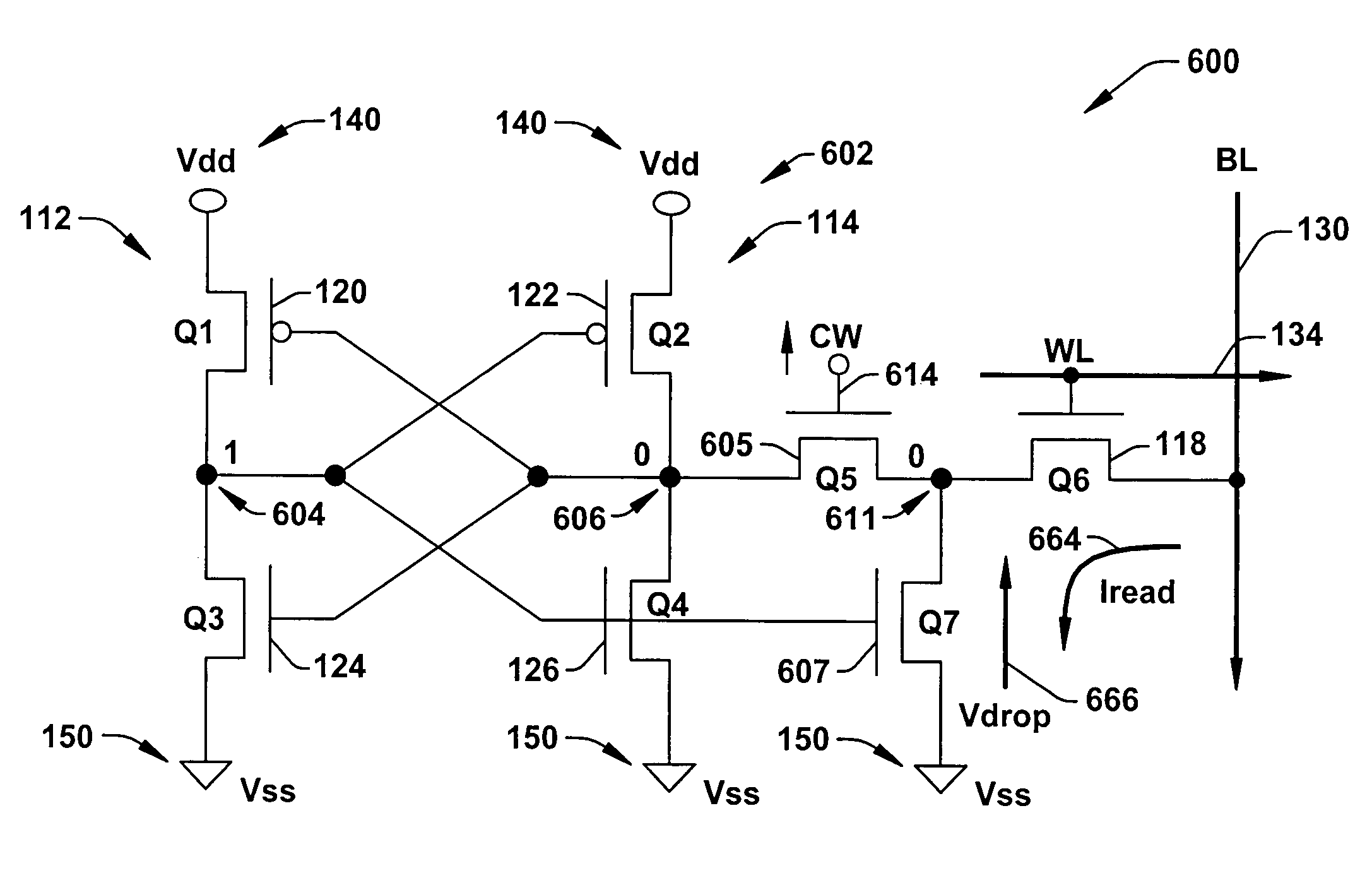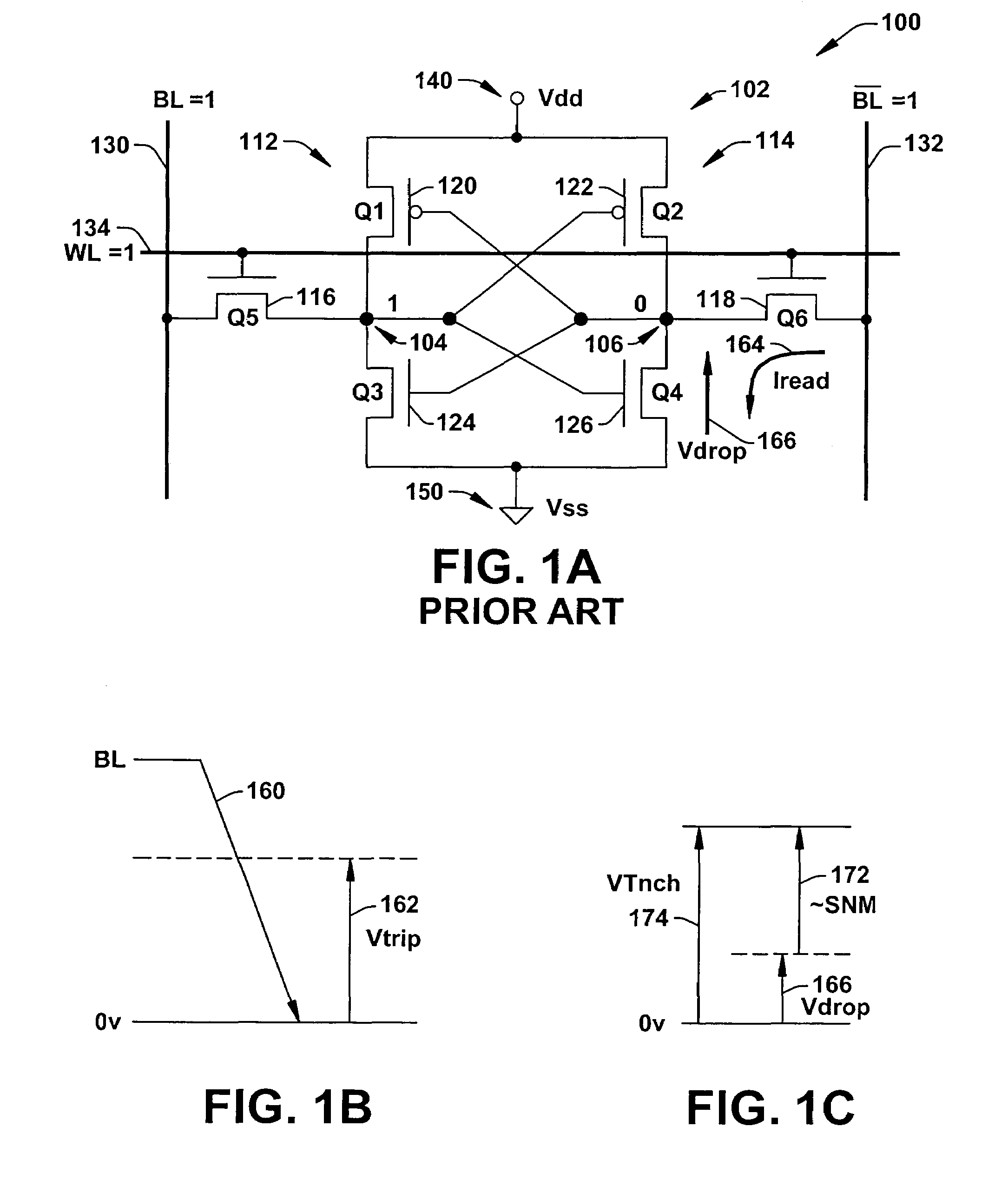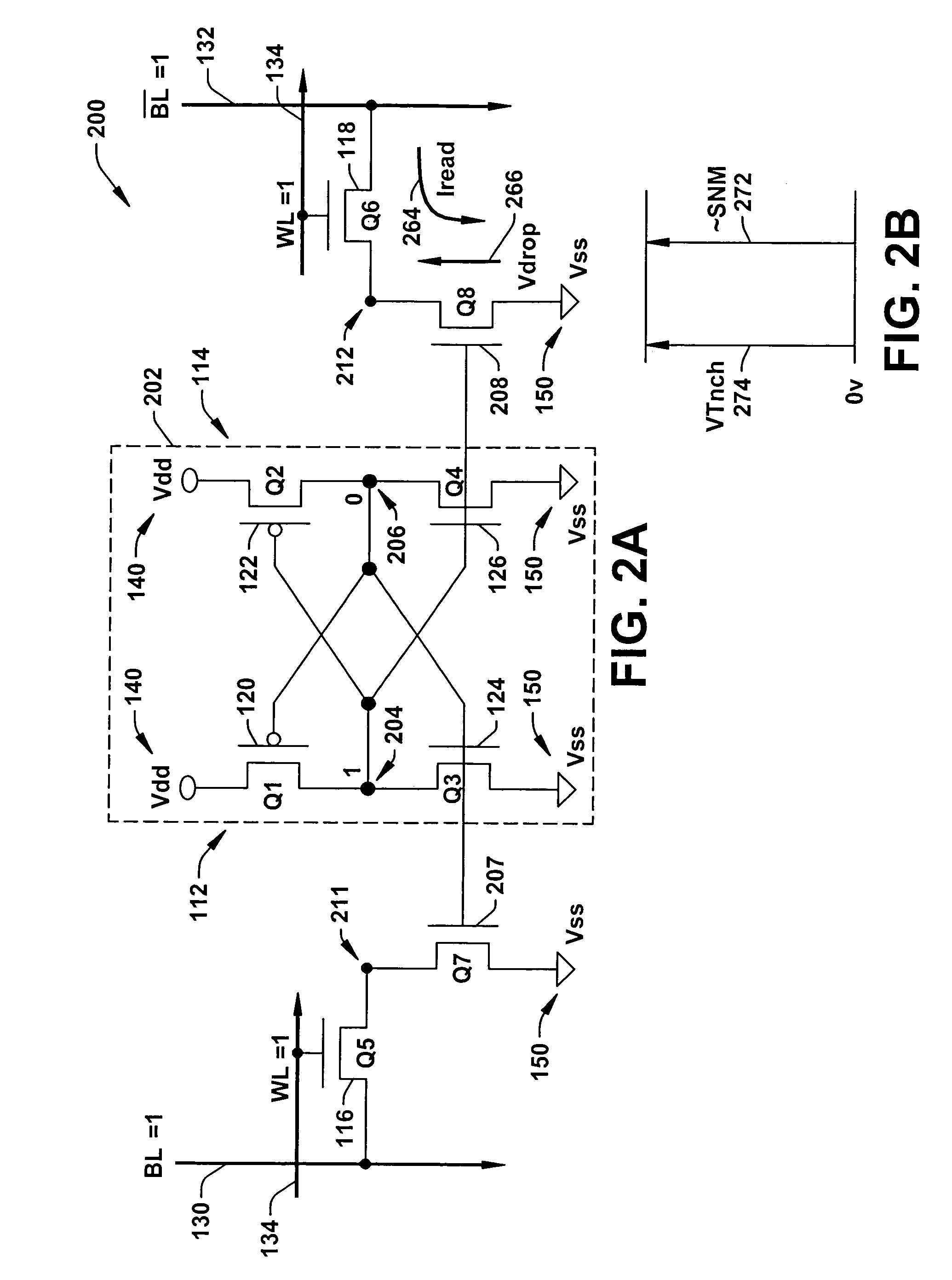SRAM cell with independent static noise margin, trip voltage, and read current optimization
a static noise margin and sram cell technology, applied in static storage, information storage, digital storage, etc., can solve the problems of increasing the difficulty of designing an sram cell, snm degradation, and no longer being able to achieve a balan
- Summary
- Abstract
- Description
- Claims
- Application Information
AI Technical Summary
Benefits of technology
Problems solved by technology
Method used
Image
Examples
Embodiment Construction
[0040]The present invention will now be described with reference to the attached drawings, wherein like reference numerals are used to refer to like elements throughout. The invention provides an SRAM memory cell structure (e.g., a 7 T single ended and a 10 T differential SRAM memory cell) utilizing a read driver transistor for removing or isolating the read current from the latch nodes (data nodes) of the data cell during read operations, and a column write transistor for selection of cell columns or a single cell during write operations. Because the read current is isolated from the data storage cell of the present invention, the static noise margin (SNM), trip voltage (Vtrip), and read current (Iread) may be independently optimized, thereby avoiding some of the static noise margin and trip voltage compromises and problems of conventional SRAM cells (e.g., a conventional 6 T differential cell).
[0041]As indicated previously, feature scaling trends continue down to around 45 nm area...
PUM
 Login to View More
Login to View More Abstract
Description
Claims
Application Information
 Login to View More
Login to View More - R&D
- Intellectual Property
- Life Sciences
- Materials
- Tech Scout
- Unparalleled Data Quality
- Higher Quality Content
- 60% Fewer Hallucinations
Browse by: Latest US Patents, China's latest patents, Technical Efficacy Thesaurus, Application Domain, Technology Topic, Popular Technical Reports.
© 2025 PatSnap. All rights reserved.Legal|Privacy policy|Modern Slavery Act Transparency Statement|Sitemap|About US| Contact US: help@patsnap.com



